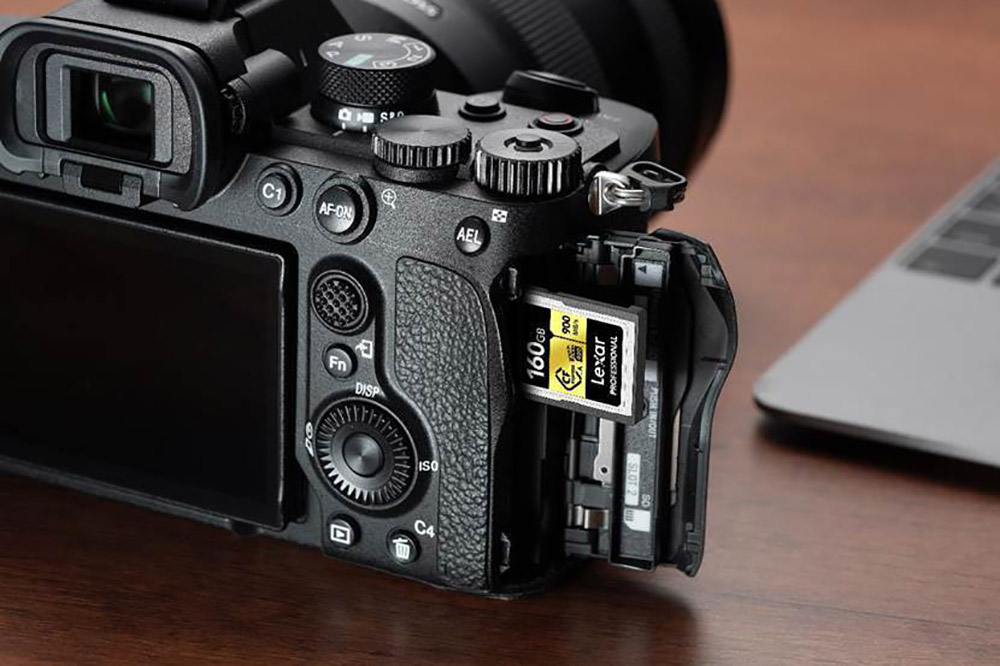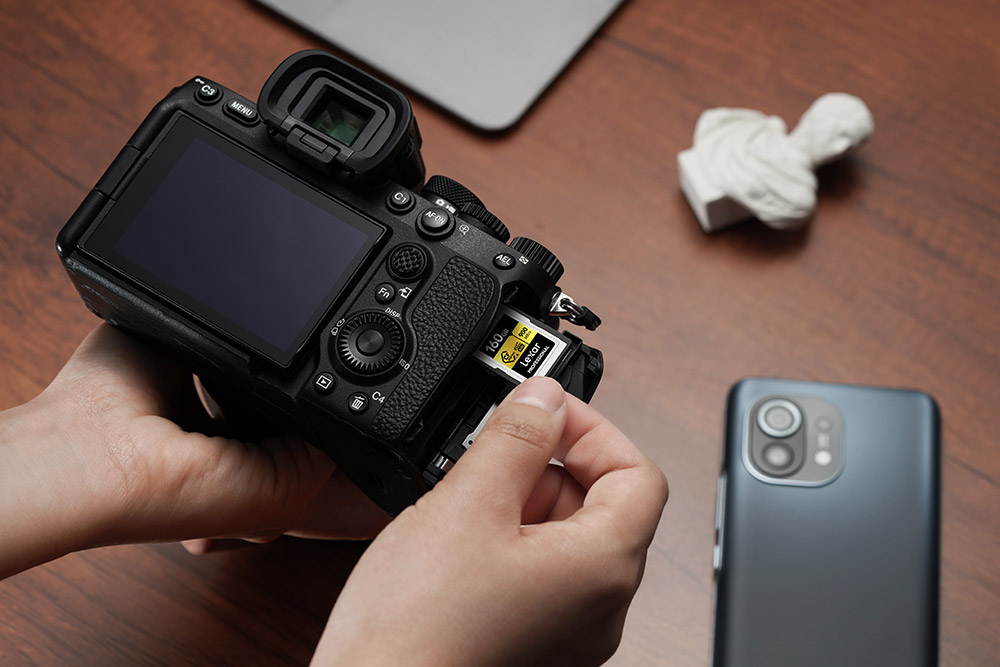- Call us: 01444 237070
- Contact Us
- Stores
- Sign In / Register
-
- Back
- Used Cameras
- Used Accessories
- Used Lenses
- Used Video
- Used Film Equipment
- Used Stock Alert
- Used Blank Test
- Sell or Part Exchange
- Used Clearance
- Recently Added Used Equipment
- Park Picks
- All Used Black Friday Deals
- Faulty
- Trade-In
- Blog
- New in
- Call us
- Contact us
- Stores
- Sign in
- Categories
- Tips & Inspiration
- Reviews
- News
- Events
- Features
- Buying Guides
- Competitions
Memory Cards Explained
When you buy a digital camera you’ll need at least one suitable memory card in order to store the photos and videos you capture. Memory cards are arguably the most essential photography accessories and we recommend having at least two or three from day one, to avoid running out of space at a critical time.

With so many different memory cards for cameras to choose from, things can get complicated pretty quickly, but don’t worry as this guide explains everything you need to know, including what the different types of cards are called. By the end you’ll know everything you need to choose the best memory card for your camera and reduce the chance of running out of space when need to keep shooting.
What is a Camera Memory Card?
Memory cards are removable storage devices, which are used in digital cameras to record the photos and videos you capture. They are available in various types (form factors), with SD cards (Secure Digital) being the most common. All memory cards are available in different size capacities and with various read / write speeds.

Do Cameras Come with Memory Cards?
Most digital cameras don't come with a memory card. With so many different card options available, camera manufacturers leave it up to you to choose the most appropriate card for your needs, as you may pick the fastest card, or the highest capacity to store 1000s of photos.
The Different Camera Memory Card Types
There are several camera memory card types and you need to choose the correct one for your camera, in order for it to fit into the card slot and work correctly.
- SD cards (Secure Digital) are the most common and compatible with the majority of recently released mirrorless cameras, as well as some medium format cameras, DSLRs and many compact cameras. SD cards are universal, which means they’ll fit any camera brand, and are chosen primarily for their capacity, which is between 32GB and 1TB, and their read/write speeds.
- Compact flash memory cards, which are also known as CF cards, are typically for higher-end digital cameras, including some DSLRs and camcorders. Although CF cards are uncommon for mirrorless systems, they are still considered to be a relatively mainstream type of memory.
- CFast memory cards are based on the Compact Flash format, with faster read/write speeds for burst shooting and 4K+ video recording, making them ideal for sports and action situations.
- MicroSD is the abbreviation for Micro Secure Digital Cards. These are the smallest type of removable memory, compatible with a handful of digital cameras, many drones and other electronic devices.
- XQD cards are less common and usually compatible with professional DSLRs and mirrorless cameras, although XQD is gradually being replaced by the newer CFexpress type memory.
- CFexpress memory cards are designed for extremely fast data capture and available in Type A for the latest high-end Sony cameras and Type B for other mirrorless cameras, certain DSLR and pro video cameras. A CFexpress card slot will conveniently also accept SD cards, although the SD format is slower than CFexpress.

What Size Memory Card do I Need for my Camera?
Size is a key factor when considering what is the best memory card for your camera. Photo and video file sizes vary considerably and there’s no single answer for how much capacity, or how many GB you need for a camera memory card, but it’s important you don't get one which is too small.
The larger the card capacity, the less often you’ll run out of space, which is especially important if your camera shoots high resolution images and 4K+ videos. The same is true if you capture images in RAW Vs JPEG, as RAW files take up considerably more space. If you only shoot photos, a 32GB or 64GB SD is adequate although you may prefer a larger card to save on time spent card swapping. For high-res photos and recording 4K+ videos, choose from 128GB to 256GB, or even larger capacities if possible.
Which memory card is best for video?
Although you can record video onto most quality brand memory cards, specific video capabilities ensure you can record high resolution video at high frame rates consistently. Video Speed Class works in combination with the UHS bus interface, with UHS-I supporting V6 to V30 classes, whilst UHS-II cards support V60 and V90.
A V30 memory card should be enough to record Full HD or 4K with low bitrates and slower frame rates, whereas 4K+ video at higher bitrates / higher frame rates, requires a V60 or V90 speed class. We’ve included a diagram below, which explains all of the markings on a memory card.

What do all of the numbers and letters on a card mean?
When browsing memory cards you’ll see each has a collection of numbers and symbols, which can be confusing to say the least. We’ve taken one of the most popular memory cards and listed out what all of these mean.
- SanDisk (brand name)
- 200 MB/s (maximum read speed)
- SDXC (extended capacity 2 GB – 2 TB)
- V30 (video speed class 30)
- I (UHS-I bus interface)
- U3 (minimum write speed is 30 MB/s)
- C10 (guaranteed 10MB/s sustained write speed)
How do I Unlock my Camera Memory Card?
It is possible for an SD card to become accidentally locked, with a small switch on the left side of the card. If this happens you may see an error message when loading the card into your camera, and you won’t be able to record any new images or videos.
In order to unlock a memory card, simply locate the small switch on the side, then slide the switch upwards towards the end with a notch, after which your card will be useable.

Can You Retrieve Deleted Photos from a Camera Memory Card?
Yes, it’s possible to recover some, and possibly all deleted pictures from a camera memory card, as long as the files haven’t been subsequently overwritten. When you purchase a new memory card, you might receive a free subscription to a data recovery service, or you can purchase data recovery software and attempt to retrieve the deleted photos that way. SanDisk recommends using RescuePRO® and RescuePRO® Deluxe, which offer a demo version for you to try.
The best way to avoid accidentally deleting important images is to lock them as you capture them. You can do this by using the camera menu, or via a specially assigned button, which is available on some camera bodies.
How Much is a Camera Memory Card?
Camera memory cards vary in price according to the capacity, read/write speeds and additional features. Faster memory cards will clear the camera buffer more quickly, allowing you to shoot faster, for longer, at higher resolutions, but cost more than slower cards.
You can buy a cost-effective 32GB SD card from around £15 or £20 upwards, which is fine for a lower resolution camera that captures images at a slower frame rate. If you intend to capture fast photo bursts, or want to record high resolution videos, a faster and larger capacity card is recommended.
Overall speed can be distinguished by UHS-I or UHS-II compliance. A 128GB UHS-I SD card costs from around £50 upwards, whereas a faster UHS-II card will cost from £60 upwards, for the same capacity. Check that your camera is UHS-II compatible if you decide on a faster UHS-II card type.
All major memory card brands such as SanDisk, Lexar and Sony make reliable cards, but you can expect to pay more for a ‘rugged’ option, which offers environmental protection against cold or being crushed. Memory cards for cameras are solid state memory, which makes them inherently more robust than spinning disk type memory, which is used for some types of computer hard drives.
A memory card is one of the most important accessories for your camera and are available in a variety of form factors, with different sizes and speeds. SD cards are by far the most common, although you should check the owner's manual, or locate your camera specs on our website if you’re unsure which type you need.

Nobody ever complained about having too much space on their cards and we recommend choosing a larger capacity if possible, as well as having at least one or two spares. For high frame rate, high resolution video recording you should choose a faster card, which is UHS-II and V60 or V90 compliant. For general videography and everyday photography any card we list on our website will do the job perfectly.
Browse our huge range of memory cards today and find the perfect ones to store your photos and videos securely and keep a couple of spares so that you never run out of space.
Share this post:
By Park Cameras on 09/01/2023

Trade in your old equipment
Fast and easy trade in service ensures your old gear is collected efficiently and you are paid quickly! It's very simple to trade in your unwanted photography gear. Just head over to our dedicated Sell or Part Exchange page, fill out the details, and we'll get back to you with an offer for your old gear. Take the cash, or put it towards the cost of your new gear. It's up to you! Find out more
sign up to the newsletter
Keep up to date on the latest photography news, events and offers. Sign up now
